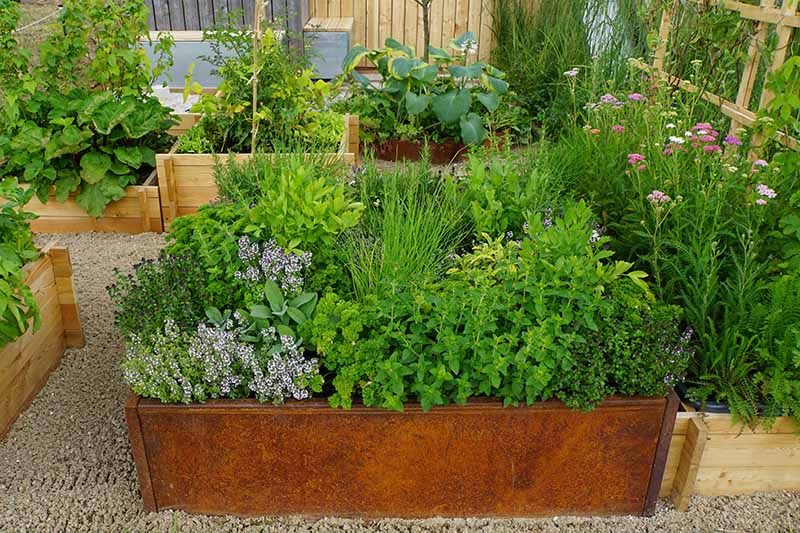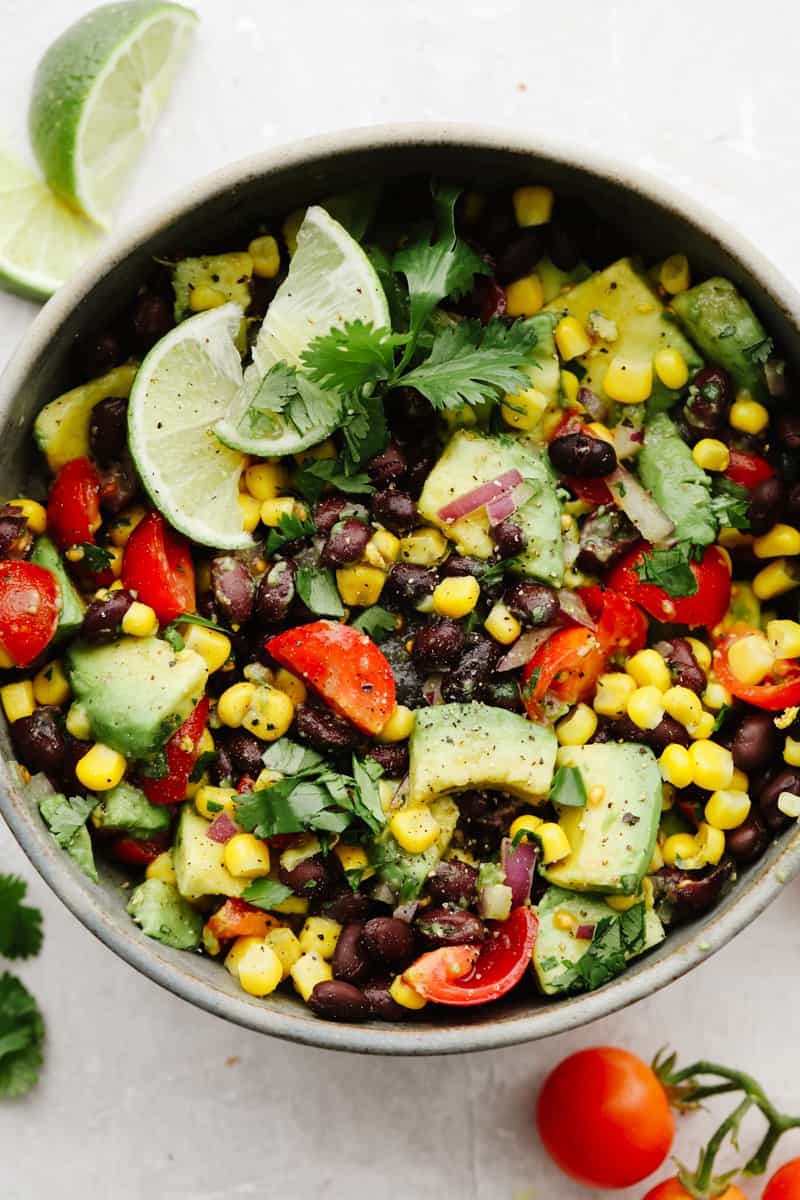The Best Vegetables To Grow Together In Raised Beds
The Best Vegetables to Grow Together in Raised Beds
Raised beds are a great way to grow vegetables, especially if you have limited space or poor soil. They are also easier to maintain than traditional gardens, as they can be raised to a comfortable working height and the soil can be amended more easily.
When choosing vegetables to grow in raised beds, it is important to consider the following factors:
- Sunlight: Most vegetables need full sun, but some can tolerate partial shade. Be sure to choose vegetables that will thrive in the amount of sunlight your raised beds receive.
- Water: Vegetables need regular watering, especially during hot, dry weather. If you live in an area with low rainfall, you may need to water your raised beds daily.
- Soil: Raised beds should be filled with well-drained, nutrient-rich soil. You can improve the quality of your soil by adding compost or manure.
- Companion planting: Companion planting is the practice of planting certain vegetables together to benefit each other. Some vegetables attract beneficial insects, while others deter pests. By planting compatible vegetables together, you can help to improve your crop yield and reduce the need for pesticides.
Here are some of the best vegetables to grow together in raised beds:
- Carrots and tomatoes: Carrots and tomatoes have different nutrient requirements, so they will not compete for nutrients in the soil. Tomatoes also provide shade for carrots, which can help to prevent them from bolting.

- Lettuce and spinach: Lettuce and spinach are both cool-season crops that grow well in the same bed. They have shallow roots, so they will not compete for water or nutrients.

- Beans and corn: Beans and corn are a classic companion planting. Beans fix nitrogen in the soil, which benefits corn. Corn provides a trellis for beans to climb, which saves space in your raised bed.

- Cucumbers and squash: Cucumbers and squash are both vining plants that can be grown together in a raised bed. They have similar water and nutrient requirements, and they will help to shade the soil, which can help to prevent weeds.

- Herbs and flowers: Herbs and flowers can be interplanted with vegetables to add beauty and fragrance to your garden. They can also help to attract beneficial insects and deter pests.

When planning your raised bed vegetable garden, be sure to consider the factors listed above. By choosing compatible vegetables and planting them in the right places, you can help to ensure a successful harvest.
Are you looking for the best vegetables to grow together in raised beds? If so, you've come to the right place! Raised beds offer many benefits for vegetable gardening, including improved drainage, better soil aeration, and easier access for weeding and harvesting. But with so many different vegetables to choose from, it can be tough to know where to start.
That's where Gardenia Inspiration comes in! This website is a comprehensive resource for all things raised bed gardening, including information on the best vegetables to grow together. The website's experts have put together a list of the top 10 vegetables for raised beds, as well as tips on how to plant and care for them.
In addition to the top 10 list, Gardenia Inspiration also offers information on companion planting, which is the practice of planting certain vegetables together to benefit each other. For example, tomatoes and basil are often planted together because basil helps to repel tomato pests.
If you're new to raised bed gardening or just looking for some new ideas, I highly recommend checking out Gardenia Inspiration. The website's experts have a wealth of knowledge and experience, and they're always happy to help.
FAQ of best vegetables to grow together in raised beds
- What are the best vegetables to grow together in raised beds?
There are many great vegetables to grow together in raised beds, but some of the most popular include:
- Carrots, tomatoes, and basil: These vegetables all have different water and nutrient needs, which helps to prevent one plant from dominating the others. Basil also helps to repel pests that can damage tomatoes.

- Cucumbers, beans, and corn: This combination is known as the "Three Sisters" and has been used by Native Americans for centuries. The corn provides a sturdy trellis for the beans to climb, while the cucumbers help to shade the soil and prevent weeds from growing.

- Lettuce, spinach, and radishes: These cool-weather vegetables can be planted together in early spring or fall. They all grow quickly and don't require a lot of space, so they're perfect for small raised beds.

- Potatoes, onions, and garlic: These vegetables all have similar growing conditions and can be planted together in the same bed. They also have different harvest times, so you'll have a steady supply of fresh produce all season long.

- Squash, zucchini, and pumpkins: These vining vegetables can take up a lot of space, so they're best suited for large raised beds. They also require full sun, so make sure your bed gets at least 6 hours of sunlight per day.

- How do you arrange vegetables in a raised bed?
When arranging vegetables in a raised bed, it's important to consider their height, water needs, and sunlight requirements. Taller vegetables should be planted in the center of the bed, while shorter vegetables can be planted around the edges. Water-loving vegetables should be grouped together, while those that prefer drier soil should be planted in a different area. And finally, make sure to plant sun-loving vegetables in areas that get at least 6 hours of sunlight per day.
- What are some companion plants that can help each other grow?
Companion planting is a gardening technique that involves planting certain plants together to benefit each other. Some common companion plants include:
- Carrots and radishes: Radishes help to repel the carrot fly, which can damage carrot roots.
- Basil and tomatoes: Basil helps to repel tomato hornworms and other pests that can damage tomatoes.
- Cucumbers and beans: Beans fix nitrogen in the soil, which can benefit cucumbers.
- Lettuce and spinach: Lettuce shades the soil and helps to prevent weeds from growing, which can benefit spinach.
- Potatoes and onions: Onions help to repel potato beetles, which can damage potato plants.
- What are some tips for growing vegetables in raised beds?
Here are some tips for growing vegetables in raised beds:
- Use a high-quality potting mix that is specifically designed for vegetables.
- Add compost or manure to the soil to improve drainage and fertility.
- Water your plants regularly, especially during hot, dry weather.
- Fertilize your plants every few weeks with a balanced fertilizer.
- Protect your plants from pests and diseases.
- Harvest your vegetables when they are ripe.
- What are some mistakes to avoid when growing vegetables in raised beds?
Here are some mistakes to avoid when growing vegetables in raised beds:
- Using poor-quality soil.
- Not watering your plants regularly.
- Not fertilizing your plants.
- Not protecting your plants from pests and diseases.
- Harvesting your vegetables too early or too late.
Image of best vegetables to grow together in raised beds
5 different images of "best vegetables to grow together in raised beds" from Pinterest:
- Carrots and tomatoes. Carrots and tomatoes are both heavy feeders, so they will benefit from the rich soil in a raised bed. Tomatoes also provide shade for the carrots, which helps to keep them cool and prevent them from bolting.

- Lettuce and spinach. Lettuce and spinach are both cool-weather crops that can be planted early in the season. They also have shallow roots, so they can be planted close together without competing for space.
- Beans and peas. Beans and peas are legumes, which means they can fix nitrogen in the soil. This helps to improve the fertility of the soil for other plants in the bed. Beans and peas also provide a good source of protein.

- Cucumbers and squash. Cucumbers and squash are both vining plants that can grow quite large. They can be planted together in a raised bed, but they will need to be supported with a trellis or fence.

- Potatoes and onions. Potatoes and onions are both root vegetables that can be planted together in a raised bed. They have different water and nutrient requirements, so they will not compete for resources.

Post a Comment for "The Best Vegetables To Grow Together In Raised Beds"